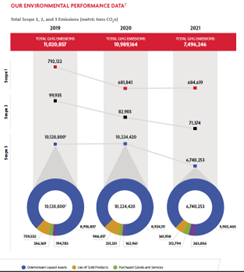Ryder CSR reporting. Easy(ier) then BIG initiatives
Ryder corporation has released its Corporate Sustainability Report for last 2021. They seem to be making more progress than many organizations, especially in the transportation industry. But their environment is one of the hardest to move to zero emissions. Long-haul trucking will be around for a long time and switching from diesel is difficult. All of the reporting creates fodder for anyone on the left, right or center to hammer on endlessly. See the Ryder…

